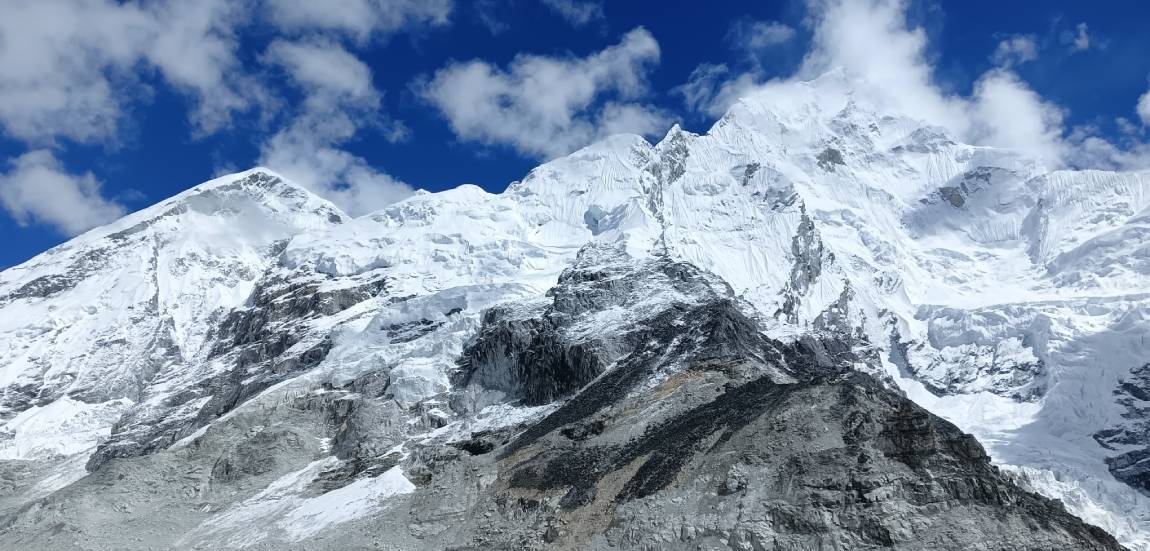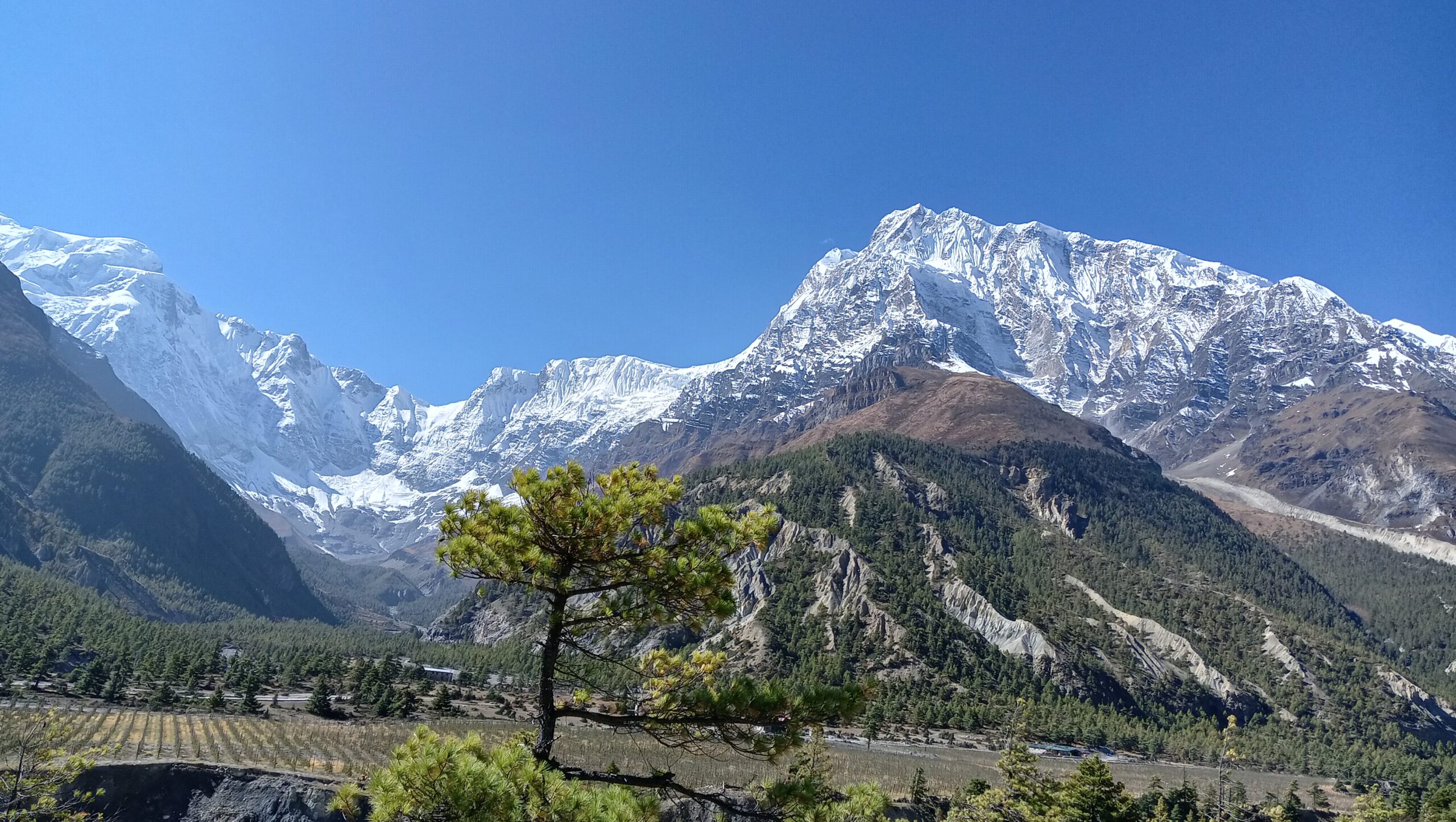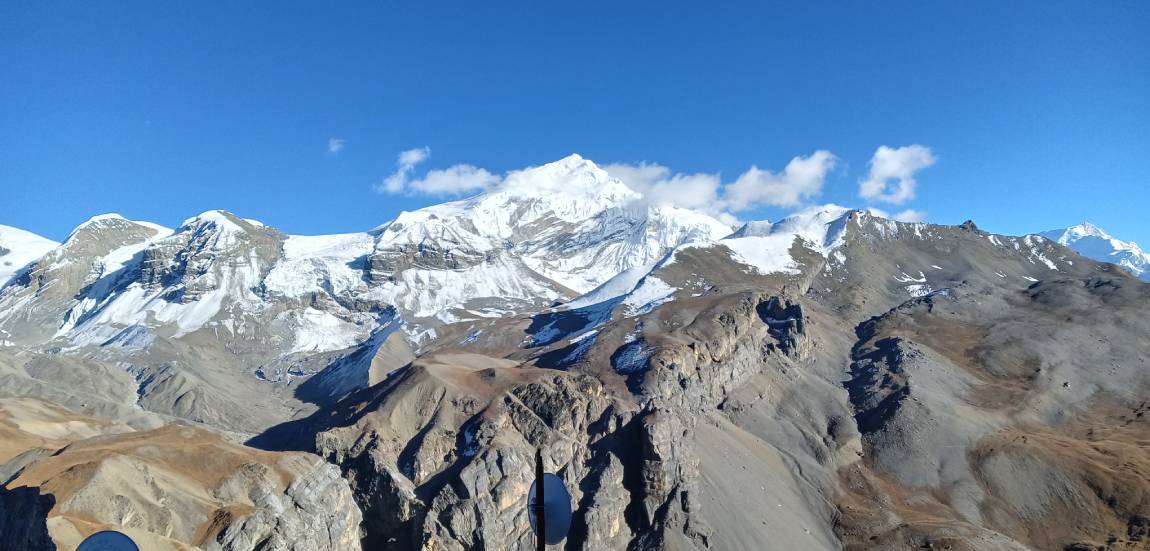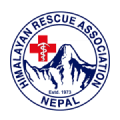Lobuche Peak Climbing

Tour Duration
18 days
Best time to go
Sep-Nov, Mar-May
Group Size
2-25 people
Max Altitude
6119m
Accommodation
Teahouse
Tour Grade
strenuous
Area
Everest Region
Hours of Walking
4-8 hrs per day
Start point - End point
Kathmandu
Everest Base Camp, nestled in the heart of the Himalayas in Nepal, is one of the most iconic trekking destinations in the world, drawing adventurers and nature lovers from across the globe. Located at an altitude of 5,364 meters (17,598 feet), the South Base Camp serves as the starting point for climbers attempting to summit Mount Everest, the highest peak on Earth. The journey to Everest Base Camp is not just a physical challenge but a deeply rewarding cultural and spiritual experience. The trek typically begins in Lukla, a small mountain town with a famously short and scenic airstrip, and winds through the Sagarmatha National Park, a UNESCO World Heritage Site rich with biodiversity, dramatic landscapes, and traditional Sherpa villages. Along the way, trekkers are treated to awe-inspiring views of towering peaks such as Lhotse, Nuptse, and Ama Dablam, as well as the majestic Everest itself.
The route also offers a chance to experience Sherpa hospitality, Buddhist monasteries, colorful prayer flags, and ancient stone mani walls carved with sacred mantras. Despite the high altitude and demanding terrain, the trek to Everest Base Camp is accessible to individuals with good physical fitness and a spirit of adventure, making it one of the most achievable high-altitude treks in the world. It typically takes about 12 to 14 days to complete the round-trip journey, including acclimatization days. While the destination itself is awe-inspiring, the true essence of the Everest Base Camp trek lies in the journey—an unforgettable adventure through some of the most spectacular and spiritually rich environments on the planet. Whether you’re chasing a lifelong dream, seeking personal growth, or simply craving the serenity of the Himalayas, Everest Base Camp offers an unparalleled experience that leaves a lasting impression on every traveler.
Lobuche Peak, standing proudly in the Khumbu region of Nepal near Mount Everest, is one of the most popular trekking peaks for climbers seeking a thrilling Himalayan adventure. With two distinct summits—Lobuche East (6,119 meters) and Lobuche West (6,145 meters)—it offers both a technical challenge and breathtaking views of the surrounding giants like Everest, Lhotse, Nuptse, and Ama Dablam. Among the two, Lobuche East is the designated trekking peak and more commonly climbed, while Lobuche West requires an expedition permit due to its technical difficulty. The climb to Lobuche Peak is often combined with the classic Everest Base Camp trek, offering climbers the chance to acclimatize and explore the stunning Khumbu Valley before attempting the summit.
The ascent involves glacier travel, steep snowy slopes, and fixed rope climbing, making it ideal for experienced trekkers looking to transition into mountaineering. From the summit, climbers are rewarded with panoramic views that few places on earth can rival. In addition to the physical challenge, Lobuche Peak offers a rich cultural journey through Sherpa villages, Buddhist monasteries, and scenic alpine landscapes. The expedition typically starts from Lukla and follows the Everest Base Camp trail before veering toward Lobuche, making it a memorable combination of trekking and climbing. Whether you’re preparing for higher Himalayan summits or simply chasing the thrill of standing atop a majestic peak, Lobuche Peak delivers a rewarding experience that blends adventure, natural beauty, and cultural immersion in one of the world’s most legendary mountain regions.
Climbing Lobuche Peak, particularly Lobuche East, is considered moderately difficult and is suitable for trekkers with a good level of fitness and some prior mountaineering experience. While it is classified as a “trekking peak” by the Nepal Mountaineering Association, the climb is not to be underestimated. The route includes steep and icy sections, glacier travel, and some technical climbing that requires the use of crampons, ice axes, and fixed ropes. The final push to the summit involves navigating a sharp ridge and steep snowy slopes, which can be physically demanding and mentally challenging, especially at high altitude.
One of the main difficulties of climbing Lobuche Peak is the altitude. At over 6,100 meters (20,000 feet), the thin air can lead to altitude sickness if climbers are not properly acclimatized. This is why many choose to combine the climb with the Everest Base Camp trek beforehand, as it helps the body adjust gradually to the elevation. Weather conditions can also be unpredictable in the Himalayas, with strong winds and cold temperatures posing additional challenges near the summit.
Although it’s not as technically demanding as other major Himalayan peaks, Lobuche still requires basic mountaineering skills, including rope handling, use of climbing gear, and glacier navigation. Most climbers tackle the peak with the help of experienced guides and support teams, which significantly improves safety and success rates. In summary, Lobuche Peak is a rewarding but challenging climb that is best suited for adventurous trekkers with some mountaineering background who are prepared for high-altitude conditions and technical terrain.
Itenary
Cost Include
- Airport Pick up and drop off by car, van or bus depending on the group size.
- 3 nights Hotel accommodation in Kathmandu with breakfast.
- Meals on full board basis (breakfast, lunch, and dinner) with Tea & coffee prepared by our cook while camping.
- Local fresh fruits like orange, apple, banana, and grape etc every after dinner.
- Lodge (teahouse) accommodation during the trekking.
- Domestic flight tickets from Kathmandu/ Lukla/ Kathmandu or ramechhap/lukla/ramechhap.
- Our professional climbing Sherpa or a guide/porter(s) as per group size.
- Food, salary, insurance, equipment, transportation, local tax of our crew members.
- Group medical supplies.
- All necessary camping gears like two men tent, dining tent, kitchen tent, Toilet tent, Shower tent, kitchen equipment, chairs and table, mattress, sleeping bag, down jacket, walking stick, climbing rope, snow bar, ice axe etc while climbing.
- Warm sleeping bag, warm down jacket, and walking stick, if necessary.
- Climbing peak permit.
- Local development fee.
- VAT and all government taxes.
Cost Exclude
- Nepal Entry Visa.
- Personal equipment for climbing.
- Personal Travel & medical insurance.
- Emergency Rescue evacuation.
- Tips to staff or anyone else,
- Extra bottled drinks (mineral, any cold drinks, and alcoholic drinks) not specified.
- Expenses of personal nature such as Laundry, phone calls, internet etc.
- Lunch and dinner in Kathmandu.
- Tips to Guide and Porters.






